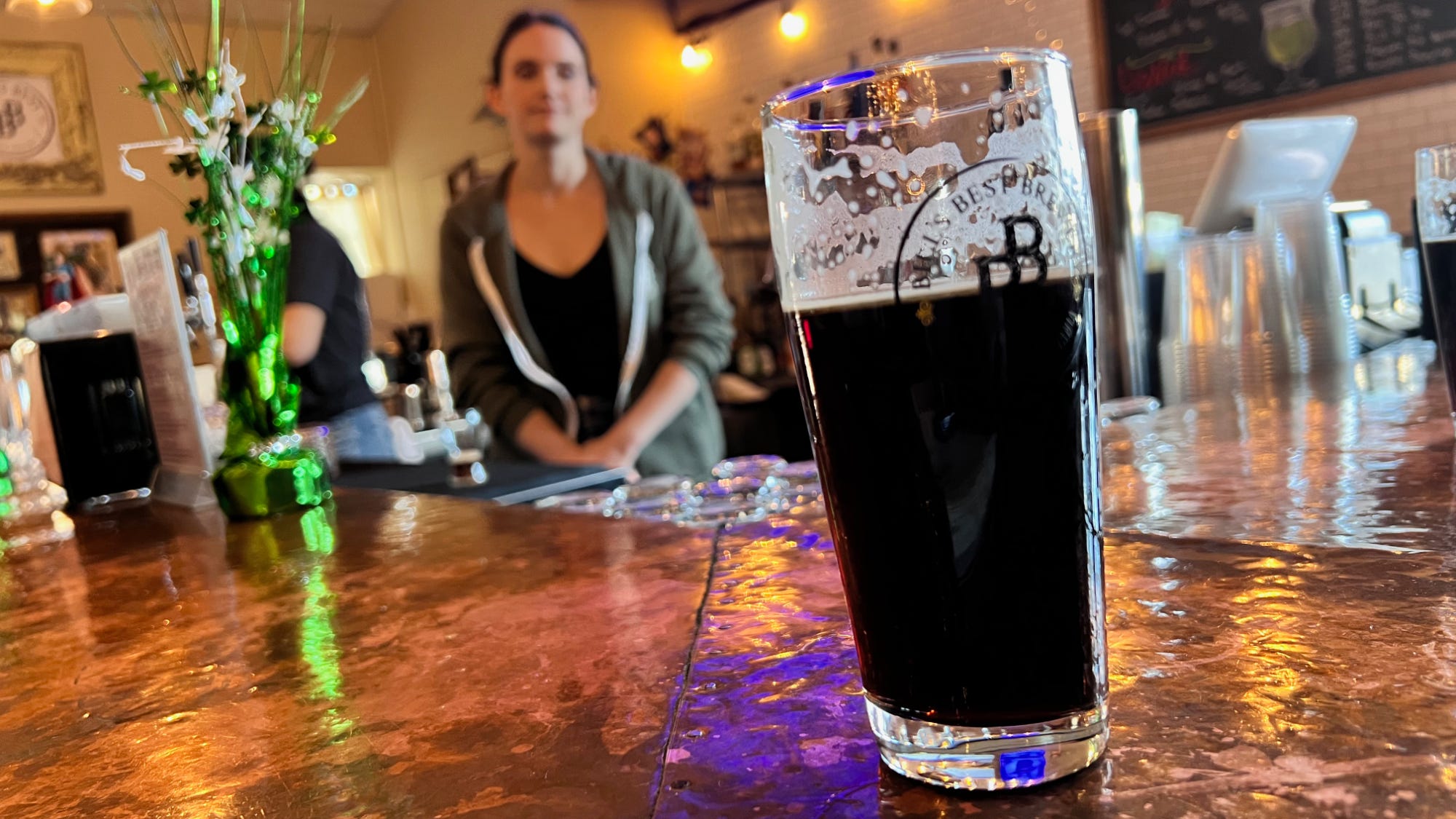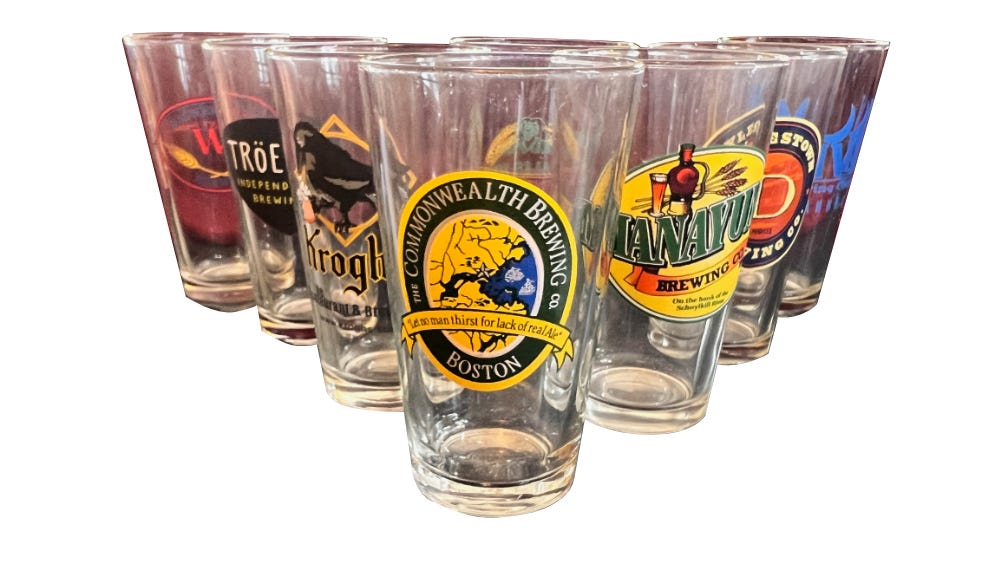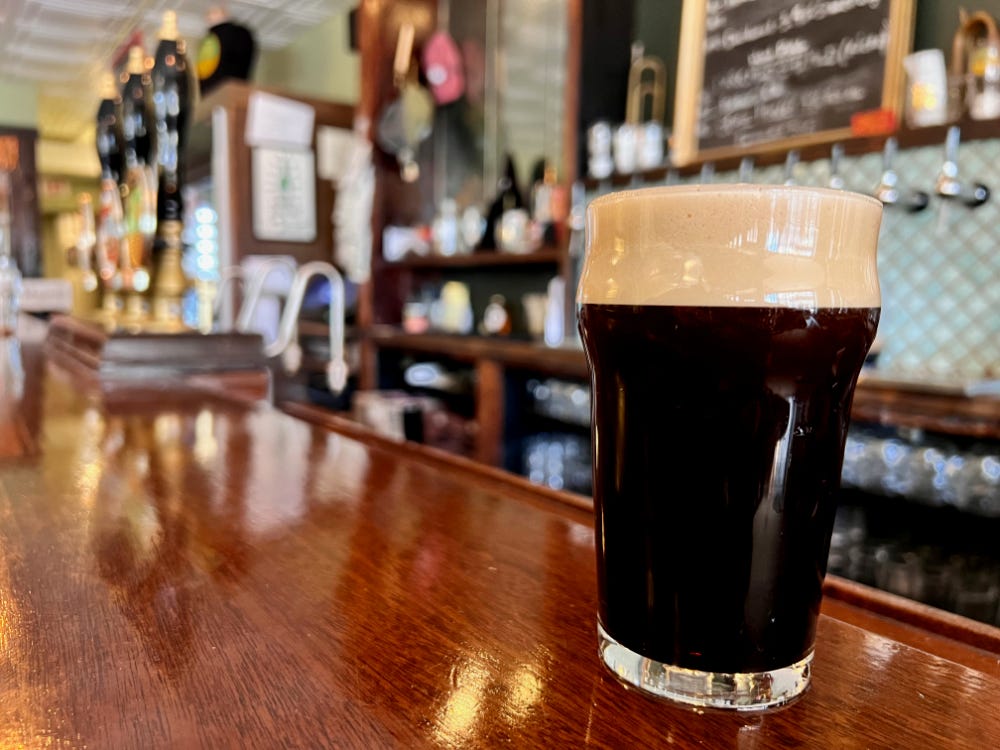
While vacationing in Maine not long ago, my brother-in-law and I stopped in one of the many breweries proliferating along the coastline. In the East Bayside section of Portland on Anderson Street, two breweries occupy space inside the same small, two-story light industrial building, and the neighborhood has three more within a half mile. Their tasting rooms offer few frills — just big rooms with sturdy tables and chairs.
A chalked list of available beer varieties on tap greets you at the Lone Pine Brewery. On our latest visit, I gazed up and down the selection of maybe fourteen ales, and all but three of them were IPAs. I looked up at the guy awaiting my order, and in my best deadpan, asked, “You wouldn’t happen to have any IPAs, would you?”
Look, I like a well-crafted IPA as much as the next guy, but I think we’ve reached peak IPA — or at least I hope so. And so, I share my plea with the IPA-or-nothing crowd to maybe branch out a little bit. How about spreading some love for other varieties? Today, a visit to any typical brew pub or tasting room, you’ll find IPAs described as west coast, New England, hazy, session, double, imperial, and so many others, listing them all senselessly kills too many pixels.
The Brewpub Saves American Beer
According to the Brewers Association, in 2017, the total number of breweries in this country crested 3,000 for the first time since the 1870s, when it began a 100-year period of decline and consolidation that bottomed out at 89 in 1978. For this back-road explorer, we’ve witnessed one of the best American mass-market culinary developments since the invention of the doughnut.
The next time you go to a craft brewery, raise your glass to Bert Grant. Unknown to me until recently, Bert started this movement in 1982, when he opened the Yakima Brewery with a pour of Scottish Ale made from his own recipe. Because the new brewery didn’t bottle or can and only served the beer by the glass or crude growlers, it established the first American brewpub since Prohibition wiped out the last of them. Grant died in 2001, leaving behind nearly 1,500 breweries.

I first heard the term brewpub while starting my career in Boston. In 1986, I learned about a bar that actually brewed its on beer on premises. What sorcery is this? I pondered. Until I moved out of the area in 1993, the Commonwealth Brewery was a favorite spot to meet friends or to take out-of-town guests. I have to think the owners took quite a risk, because their full-service restaurant occupied a large, high profile space a quick walk from the entrance to the Boston Garden, but it thrived and spawned craft brewing across New England. I warmed a seat there at least monthly.
While road-tripping, the brewpub almost guaranteed a good meal in a strange town. In the 90s, most of them served food, often better than typical pub fare and value-priced. If they cared that much about the beer, then it stood to reason the food would follow. During a cross-country trek in 1998, brewpubs provided some of the best meals and some unforgettable interactions with the locals.
IPAs then were a revelation. Hoppy, juicy, and perfect on a hot summer day, I sought them out along with pale and amber ales. The English styles generally became favorites. No longer could Europeans turn up their haughty noses at American beer. I visited England in 2016, champing at the bit to finally hit the pubs and sample the ales, which turned out to be the biggest disappointment of the entire trip. I flew home thinking the same way about a British bitter that a German regarded Budweiser: piss wasser. On the other hand, the pubs themselves were heaven. Did something like that exist in the Philadelphia area?
Into the Darkness
“It’s like sucking on a pine cone,” a friend of mine declared passionately during a discussion about IPAs. Not always, I countered, but all-too-often, yes. Brewers can’t resist pushing the envelope with this trend, shoveling in what tastes like a pound of hops in every pint. My wife has rejected almost every one she’s tried as “too hoppy” and to my taste, too many are. I can cite a few favorites, but I don’t seek out new ones.
My pub tour of England wasn’t a complete bust. I found much to like about the beer’s warmer temperature. Many, if not most, Americans wince at the idea of a room temperature beer, but that’s misleading. This room is a basement — cool, not cold — and as fall turns to winter, the last thing I want on a frigid day is an ice-cold beer.
Last November, the Wall Street Journal cited a growing trend of breweries offering darker, milder, lower-alcohol, English-style ales. They specifically cited an English mild ale called Poor Yorick brewed by a pub local to me called Forest & Main. They described this ale as “a dark mild delivered at cellar temperature courtesy of a hand-pumped cask via a British-style beer engine.”
Forest & Main originally set up shop in a Victorian-era house on that corner in Ambler, Pennsylvania in 2012. They have since moved to a more high profile location and left their food service behind — a pity since they made one of the best burgers around. However, the new spot embodies almost everything I’ve been looking for in a pub since I came back from England. No food but no televisions either.

On my last visit, I counted thirteen varieties on the list, with only three IPAs. They rounded out the rest of the lineup with a lager, a saison, a pale, a grisette, and what I came for, ales on the dark side drawn through three beer engines — a rare feature even in the brewery-rich Philly region.
Have we reached peak IPA? The brewer at F&M thinks so. “We gently try and push non-IPA styles while still providing delicious IPA options. We love those little dark milds and are so happy we have a receptive audience for them.”
Britain in My Back Yard
Sadly, I can’t walk to Forest & Main, but I can reach Bill’s Best by foot and burn off at least a pint in the process. Their tiny unassuming brewery opened less than a mile from my house in 2019. It soldiered through the pandemic, selling four-packs of an expanding lineup out the side door, emerging as a beloved neighborhood fixture. It’s the classic corner bar, with its own cast of regulars dropping by to catch a game, play Quizzo, and solve the world’s problems, while choosing from the revolving list of ales. I often see kids here, which I love, because why not? The space is small, but open and airy, and the kids can play games leaving the parents alone to talk about parenting.
Bill’s Best sealed the deal for me with the Skinny Angus, a traditional English-style stout. It weighs in at a civilized 4.5% alcohol content, while still full-bodied with tempered bitterness and a smooth finish. Discovering this on my first visit since the pub fully reopened, I celebrated our restored freedom with four pints. This was the English pub ale I expected to find in England.
But look. I’m not your beer expert. I’m just a guy who appreciates creativity in what I eat. Until three years ago, I never touched a stout. Once the trees shed their foliage, that’s what I want. Even better, the craft brewing renaissance has vastly expanded the options for us all. It seems irresponsible of me to not take advantage of that. Forty years ago, we had almost nothing but lagers.
Whenever someone asked me, “What’s your favorite thing to get in a diner,” I replied without hesitation, “Whatever’s on the specials board.” When the chef or the brewer experiments with the formula, and I get to sample it, I’m a happy boy. Maybe not everything works, or worse, it does but never appears on the menu again, at least the process of discovery gives me another cherished memory.
I don’t know if there’s a heaven, but if there is, Bert Grant has to reside there. And if he does, that means the song is wrong. There’s no way the saints would keep him from spending his eternity without a fresh pint in hand and a keg nearby to share.
Details
Find Bill’s Best at 57 S. Keswick Ave in Glenside, Pennsylvania. They also happen to make and sell their own barbecue sauce, which we strongly recommend. It’s on our table whenever we smoke a brisket or ribs.
Forest & Main has both a pub and a tasting room. The pub is on the corner of Ambler’s Butler Avenue and Spring Garden Street in the heart of the borough’s downtown, which is well-worth exploring. Since we featured it in Roadside #33, the town has progressed dramatically with hardly an empty storefront. The tasting room is located at 241 Main Street.
The Lone Pine Brewery is but one of many amazing breweries within and all around Portland, Maine. With any luck, they have at least a few more beers that are not IPAs. As I write, they’re website features an imperial brown ale infused with maple syrup, a white ale, and two stouts. Maybe there’s hope after all. They’re located at 219 Anderson Street in Portland, Maine.
Have your own favorite? Discuss in the comments below.






